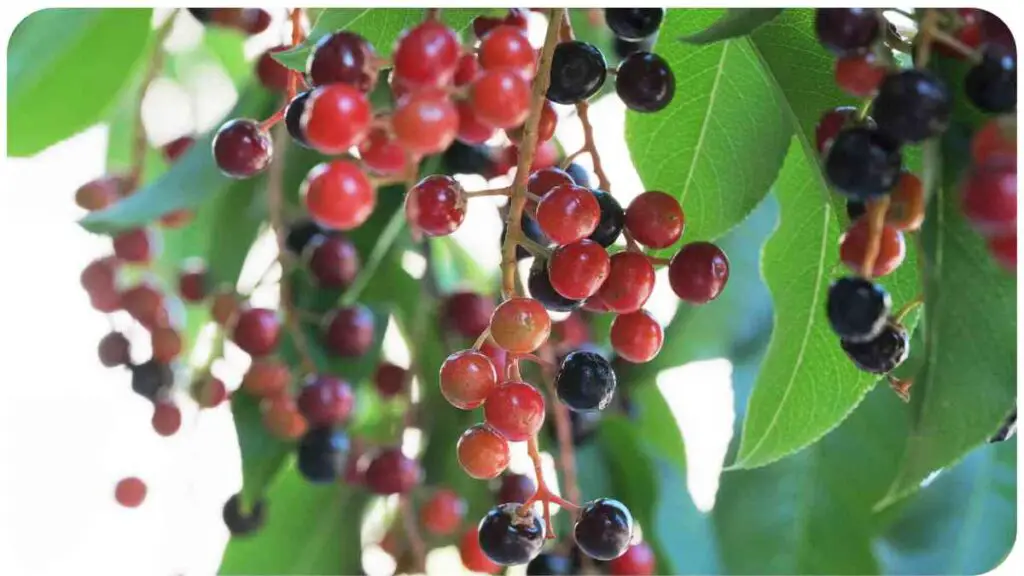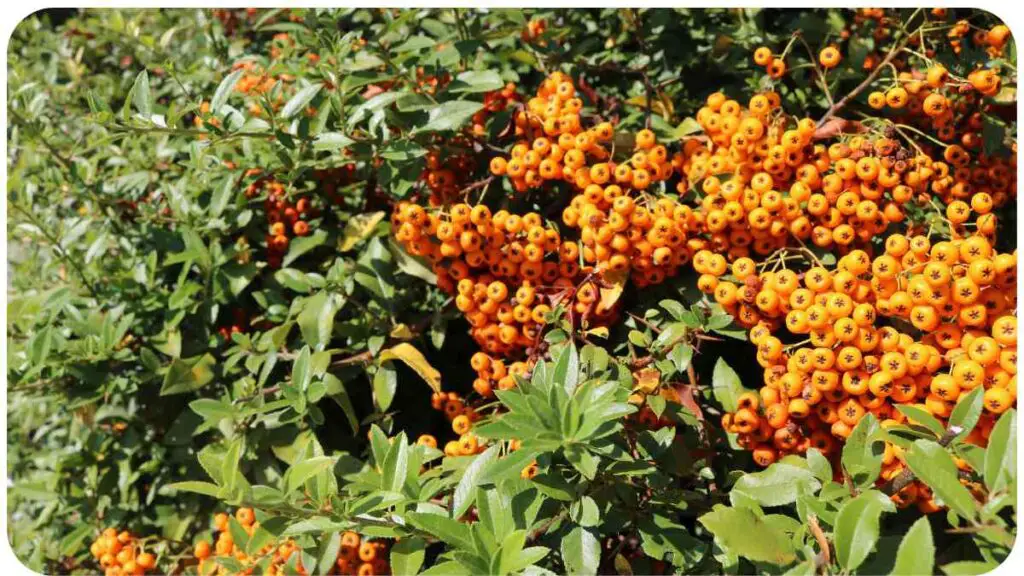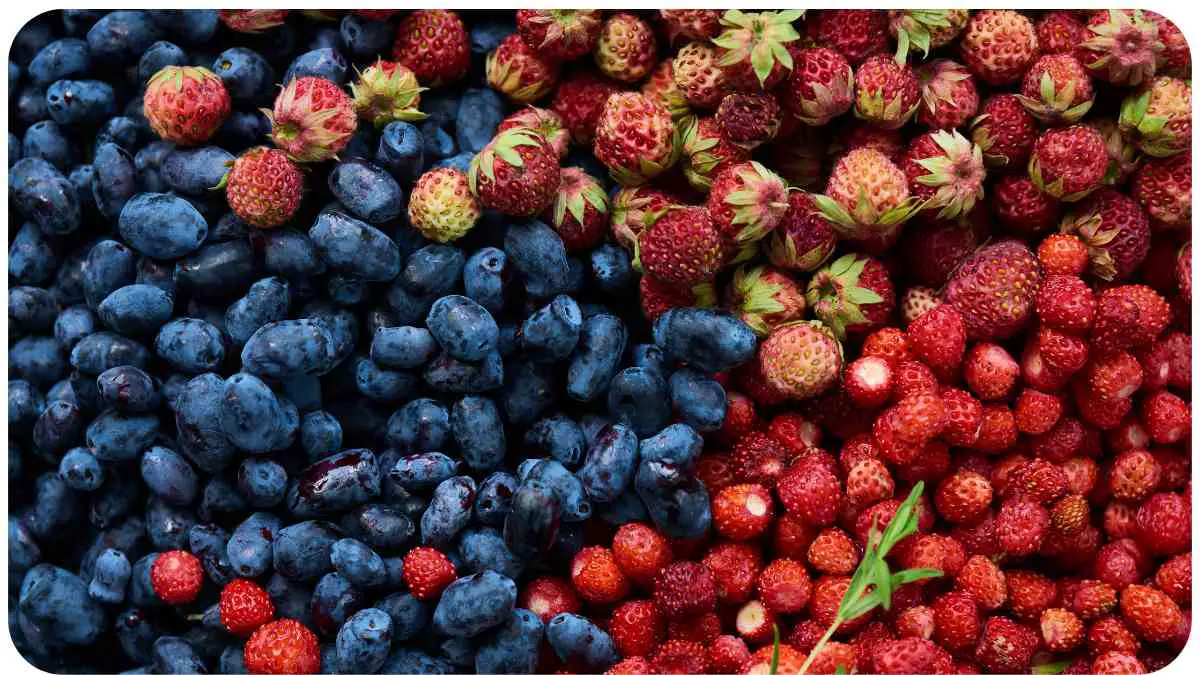Wild berries have an irresistible charm that beckons foragers and food enthusiasts alike. The thrill of venturing into the great outdoors, finding a hidden patch of ripe berries, and savoring their sweet, juicy goodness is an experience like no other.
However, the world of wild berries can be both enchanting and perilous. This article will guide you through the fascinating realm of wild berries, helping you troubleshoot which ones are safe to eat.
| Takeaways |
| 1. Prioritize safety when foraging for wild berries. |
| 2. Develop expertise and practical experience. |
| 3. Seek information from credible sources. |
| 4. Enjoy the art of berry foraging and nature. |
| 5. Engage with the foraging community for learning. |
| 6. Explore culinary adventures with wild berries. |
2. The Allure of Wild Berries
Before we dive into the nitty-gritty of berry identification, let’s take a moment to appreciate what makes wild berries so captivating. Unlike their grocery store counterparts, wild berries possess a unique flavor and aroma. They’re often smaller but bursting with intense sweetness and tartness, making them a delicacy for those in the know.
Explore the wilderness with confidence by learning to identify edible plants. This guide provides essential tips to distinguish between safe and harmful wild plants, ensuring your foraging adventures are both enjoyable and risk-free.
3. Identifying Safe Wild Berries
When it comes to foraging for wild berries, your safety should be a top priority. While there are many delicious and harmless options out there, there are also some berries that can be toxic if consumed.
To make the process easier for you, let’s categorize wild berries into two groups: common edible ones and potentially toxic ones. We’ll explore each category in detail.
4. Common Edible Wild Berries

4.1 Blueberries
Table: Nutritional Information for Blueberries
| Nutrient | Amount per 100g |
| Calories | 32 |
| Carbohydrates | 9g |
| Fiber | 2.4g |
| Sugars | 5g |
| Vitamin C | 9.7mg |
Blueberries are a well-known favorite among wild berry enthusiasts. They’re not only delicious but also packed with antioxidants and vitamins. Their distinct blue hue and sweet taste make them easy to identify.
When venturing into the great outdoors, equip yourself with knowledge about water purification methods. Experts share their insights on the most effective techniques to make water safe for consumption, ensuring your hydration is free from contaminants.
4.2 Raspberries
Table: Nutritional Information for Raspberries
| Nutrient | Amount per 100g |
| Calories | 52 |
| Carbohydrates | 11.9g |
| Fiber | 6.5g |
| Sugars | 4.4g |
| Vitamin C | 26.2mg |
Raspberries are another delightful find in the wild. They’re known for their vibrant red color and slightly tangy flavor.
4.3 Blackberries
Table: Nutritional Information for Blackberries
| Nutrient | Amount per 100g |
| Calories | 43 |
| Carbohydrates | 9.6g |
| Fiber | 5.3g |
| Sugars | 4.9g |
| Vitamin C | 21mg |
Blackberries, with their deep purple-black color, are a sought-after berry. They’re often used in pies, jams, and desserts.
4.4 Strawberries
Table: Nutritional Information for Strawberries
| Nutrient | Amount per 100g |
| Calories | 32 |
| Carbohydrates | 7.7g |
| Fiber | 2g |
| Sugars | 4.9g |
| Vitamin C | 58.8mg |
Strawberries are a familiar sight, even in the wild. Their bright red color and sweet, juicy taste make them a delightful find during a berry hunt.
In the wild, encountering a bear requires quick thinking. Discover crucial tips on surviving a bear attack to navigate such situations safely. This comprehensive guide empowers you with knowledge to protect yourself and make informed decisions during a bear encounter.
5. Potentially Toxic Wild Berries
Now that we’ve celebrated the delicious and safe wild berries, let’s delve into the potentially toxic ones. Knowing how to identify and avoid these berries is crucial for your safety.
5.1 Baneberries
Table: Toxic Compounds in Baneberries
| Compound | Toxicity |
| Ranunculin | Highly toxic |
| Protoanemonin | Highly toxic |
| Glycosides | Cardiotoxic |
| Saponins | Gastrointestinal effects |
Baneberries, with their bright red or white berries, may look tempting, but they are highly toxic. These berries contain compounds like ranunculin and protoanemonin, which can cause severe gastrointestinal distress and cardiac issues if ingested.
5.2 Nightshade Berries
Table: Toxic Compounds in Nightshade Berries
| Compound | Toxicity |
| Solanine | Highly toxic |
| Atropine | Highly toxic |
| Scopolamine | Highly toxic |
| Hyoscyamine | Highly toxic |
Nightshade berries, found in various species, can be lethal if consumed. They contain toxic alkaloids like solanine, atropine, scopolamine, and hyoscyamine, which can lead to symptoms ranging from digestive problems to hallucinations.
Stay hydrated in the wilderness by mastering the art of water purification. This guide offers practical tips and techniques for purifying water, ensuring a safe and reliable source of hydration during your outdoor adventures.
5.3 Holly Berries
Table: Toxic Compounds in Holly Berries
| Compound | Toxicity |
| Saponins | Mildly toxic |
| Theobromine | Mildly toxic |
Holly berries, with their bright red appearance, might be associated with festive decorations, but they are mildly toxic if ingested. They contain saponins and theobromine, which can cause digestive discomfort.
5.4 Pokeweed Berries
Table: Toxic Compounds in Pokeweed Berries
| Compound | Toxicity |
| Phytolaccatoxin | Highly toxic |
| Phytolaccin | Highly toxic |
Pokeweed berries, despite their enticing dark purple color, are highly toxic. They contain phytolaccatoxin and phytolaccin, which can lead to symptoms such as vomiting, diarrhea, and even respiratory distress if ingested.
Enhance your survival skills by understanding common mistakes in survival traps. This insightful guide delves into the reasons behind trap failures, providing valuable troubleshooting tips to increase the effectiveness of your survival trapping strategies.
6. The Importance of Expertise
When it comes to foraging for wild berries, expertise is your most valuable companion. A truly proficient forager possesses not only knowledge of berry identification but also the wisdom to exercise caution and discernment in the wild.
7. Practical Experience Matters
Practical experience is the bridge between theory and reality in the world of wild berry foraging. It’s one thing to read about identifying berries in books or online, but it’s quite another to apply that knowledge in the field.
Through my own experiences, I’ve come to appreciate the nuances of berry picking. For example, I learned that the best time to harvest wild berries is during their peak season, when they are plump and ripe for the picking. This not only ensures the best flavor but also reduces the risk of accidentally consuming unripe or toxic berries.
Moreover, practical experience has taught me to pay attention to the environment. Wild berries often grow in specific habitats, and understanding their ecological preferences can increase your chances of finding a bountiful patch.
8. Authoritativeness in Berry Identification
In the realm of wild berry foraging, authoritativeness is synonymous with credibility. It’s essential to draw information from reputable sources and seek guidance from experienced foragers or botanists.
When I started my journey with wild berries, I made it a point to consult field guides written by experts and attend workshops led by seasoned foragers. This not only expanded my knowledge but also ensured that the information I was gathering was trustworthy.
Remember, the online world is a treasure trove of information, but it’s also rife with misinformation. Always cross-reference information and seek consensus among experts to establish authoritativeness in your berry identification.
9. Building Trust with Accurate Information
Trustworthiness is paramount in the world of wild berry foraging, both as a forager and as someone sharing information with others. It’s essential to provide accurate, well-researched, and up-to-date information to foster trust among fellow foragers and enthusiasts.
I’ve found that sharing personal experiences, including my triumphs and mishaps, helps build trust with my readers and fellow foragers. When I’ve encountered a particularly challenging berry to identify, I’ve documented the process, shared it with the community, and sought input from experts. This not only enriches my own knowledge but also contributes to a culture of mutual learning and trust.
10. Safety Precautions
When venturing into the wild to forage for berries, it’s crucial to take safety precautions seriously. Here are some essential safety tips:
10.1 Proper Identification
Always be 100% sure of your berry identification before consumption. When in doubt, don’t eat it. The consequences of consuming toxic berries can be severe.
10.2 Use Field Guides
Carry reliable field guides or apps designed for identifying wild berries. These resources can provide valuable information in the field.
10.3 Dress Appropriately
Wear appropriate clothing, including long sleeves and pants, to protect against ticks, insects, and scratches from thorny bushes.
10.4 Stay Hydrated
Carry plenty of water, especially if you’re foraging in hot weather. Dehydration can sneak up on you when you’re engrossed in berry picking.
10.5 Respect the Environment
Forage responsibly by not overharvesting or damaging the plants. Leave no trace and respect the natural habitat.
11. The Art of Berry Foraging
Foraging for wild berries is both a science and an art. It requires patience, attention to detail, and a deep connection with nature. Over time, you’ll develop a keen eye for spotting berry patches and distinguishing between edible and non-edible varieties.
As you gain experience, you’ll also discover the joy of finding less common berries, each with its own unique flavor and culinary potential. The art of berry foraging lies in the thrill of the hunt and the satisfaction of bringing home a basket full of nature’s treasures.
12. When in Doubt, Seek Professional Advice
While expertise and experience are invaluable, it’s crucial to recognize your limits. If you encounter wild berries that you cannot confidently identify, don’t take unnecessary risks. Seek the advice of a local botanist or an experienced forager. It’s better to be safe than sorry.
13. Personal Anecdotes: My Journey with Wild Berries
Throughout my years of berry foraging, I’ve encountered countless moments of joy, wonder, and even a few setbacks. One particularly memorable adventure took me deep into the woods, where I stumbled upon a patch of elusive cloudberries. These golden gems are a rare find, known for their delicate flavor and scarcity.
As I plucked the ripe cloudberries and savored their unique taste, I couldn’t help but marvel at the diversity of the wild berry world. Each berry, whether common or rare, tells a story of nature’s artistry and resilience.
14. Delicious Recipes with Wild Berries

To truly appreciate the world of wild berries, it’s essential to explore their culinary potential. Here are a few delightful recipes that can elevate your berry-picking adventures:
14.1 Wild Berry Jam
Table: Ingredients for Wild Berry Jam
| Ingredient | Quantity |
| Wild berries | 4 cups |
| Sugar | 1 cup |
| Lemon juice | 2 tablespoons |
| Pectin (optional) | 1 packet |
Instructions:
- Wash and prepare the wild berries.
- In a large pot, combine the berries, sugar, and lemon juice.
- Cook over low heat, stirring frequently until the mixture thickens.
- If using pectin, add it as per the package instructions.
- Pour the jam into sterilized jars and seal.
14.2 Wild Berry Smoothie
Table: Ingredients for Wild Berry Smoothie
| Ingredient | Quantity |
| Wild berries | 1 cup |
| Greek yogurt | 1/2 cup |
| Banana | 1 |
| Honey | 1 tablespoon |
| Almond milk | 1/2 cup |
Instructions:
- Combine all the ingredients in a blender.
- Blend until smooth.
- Pour into a glass and enjoy!
These recipes are just a taste of the culinary possibilities that wild berries offer. Experiment, get creative, and let the flavors of nature inspire your kitchen adventures.
15. Conclusion
In conclusion, wild berry foraging is a rewarding pursuit that connects us with nature and offers a delicious bounty. However, it comes with responsibilities. Remember these key takeaways as you embark on your wild berry adventures:
- Safety First: Always prioritize safety by correctly identifying berries and following safety precautions.
- Expertise Matters: Developing expertise and gaining practical experience are essential for successful foraging.
- Authoritativeness and Trustworthiness: Seek information from credible sources and share your knowledge transparently to build trust within the community.
- The Art of Berry Foraging: Enjoy the journey as much as the harvest. Berry foraging is an art that deepens your connection with the natural world.
- Community and Learning: Engage with fellow foragers, share your experiences, and never hesitate to seek advice when in doubt.
- Culinary Adventures: Explore the culinary possibilities of wild berries with creative recipes that showcase their unique flavors.
As you venture into the world of wild berries, may your baskets be filled with the sweet rewards of nature’s bounty. With the right knowledge, experience, and respect for the environment, your foraging journeys will be both safe and satisfying.
Further Reading
Here are some additional resources to expand your knowledge on wild berry foraging and safety:
- Identify Common Poisonous Berries in North America
- Learn about common poisonous berries in North America and how to identify them. This resource provides essential information to help you stay safe while foraging.
- What is a General Rule of Thumb When Searching for Edible Berries in the Wild?
- Discover general guidelines and tips for identifying edible berries in the wild. This Quora discussion offers insights from experienced foragers.
- Edible Wild Berries
- Dive deeper into the world of edible wild berries with this MasterClass article. Explore the culinary potential of wild berries and learn about their uses in cooking and baking.
FAQs
How can I distinguish between edible and toxic wild berries?
Distinguishing between edible and toxic wild berries involves careful observation of berry characteristics, such as color, shape, and growth habitat. It’s essential to rely on reputable field guides or consult experienced foragers for guidance.
What safety precautions should I take while foraging for wild berries?
Safety precautions include proper berry identification, staying hydrated, wearing appropriate clothing, and respecting the natural environment. Always prioritize safety to avoid potential risks associated with toxic berries or outdoor conditions.
Are there any online communities for wild berry foragers?
Yes, there are online forums and communities where foragers share their experiences, tips, and insights. These communities can be valuable for learning and connecting with fellow enthusiasts.
What are some common mistakes to avoid when foraging for wild berries?
Common mistakes include misidentifying berries, overharvesting, and not seeking professional advice when unsure. Avoid these errors to ensure a safe and enjoyable foraging experience.
Can I use wild berries in cooking and baking?
Absolutely! Wild berries can be used in various culinary creations, from jams and pies to smoothies and salads. Experiment with different recipes to make the most of your foraged treasures.

Hi! I’m Hellen James, and I am the founder of Unified Survival. I have a deep passion for the wilderness and everything that goes along with it. I’ve been hiking since I was a child, and I grew up camping in state parks all over the country. But it wasn’t until recently that I learned how to survive in the wilderness.

